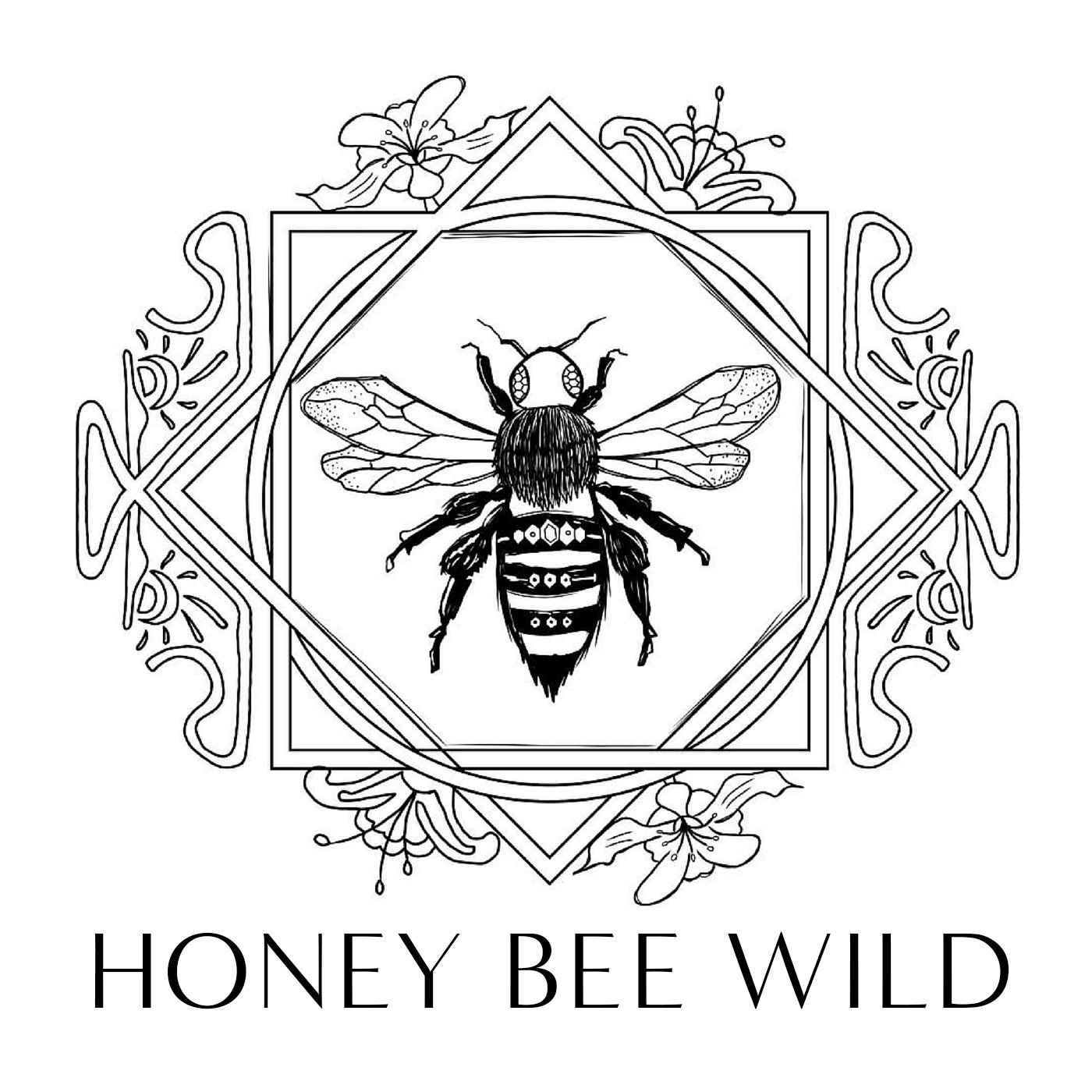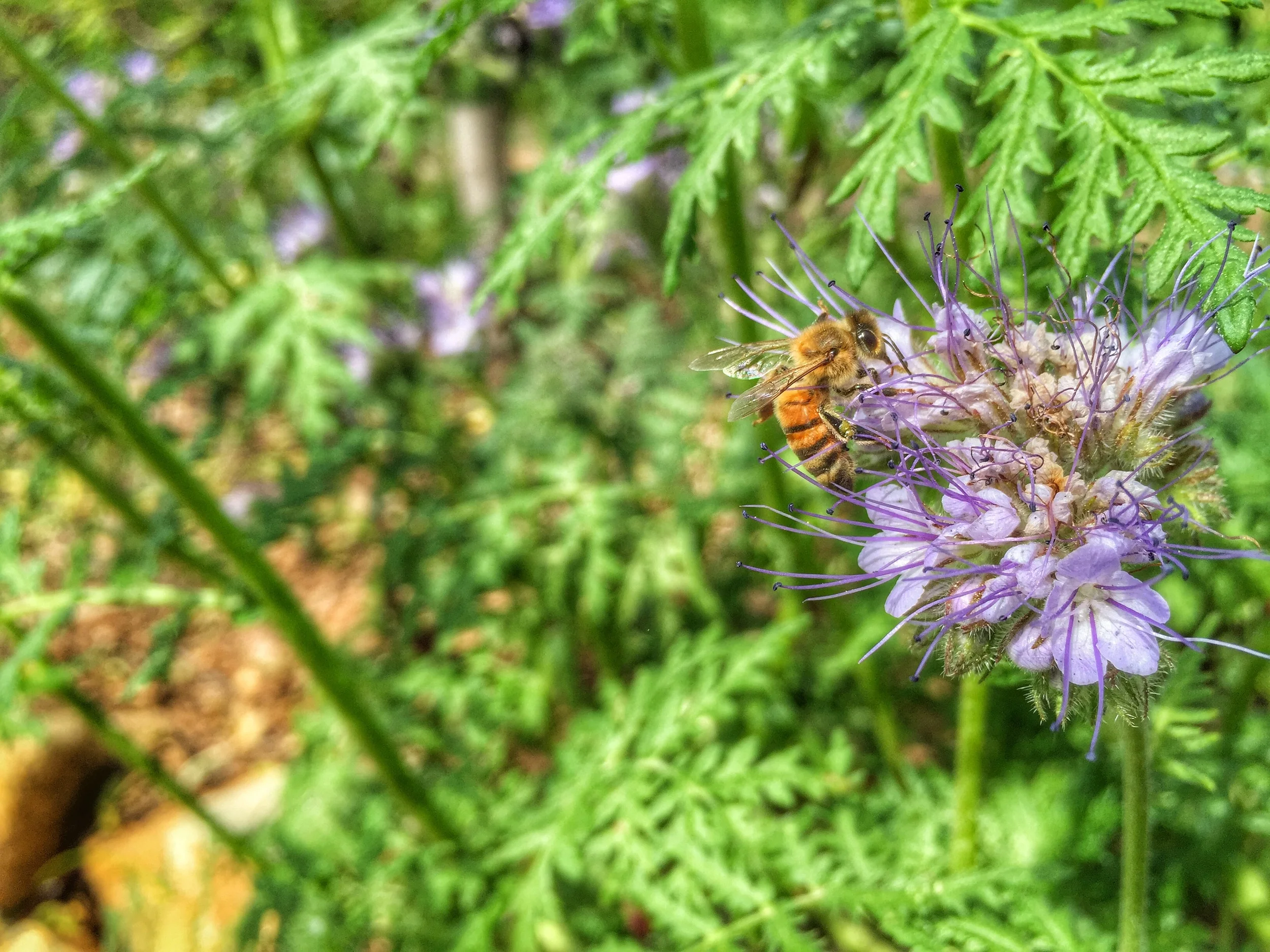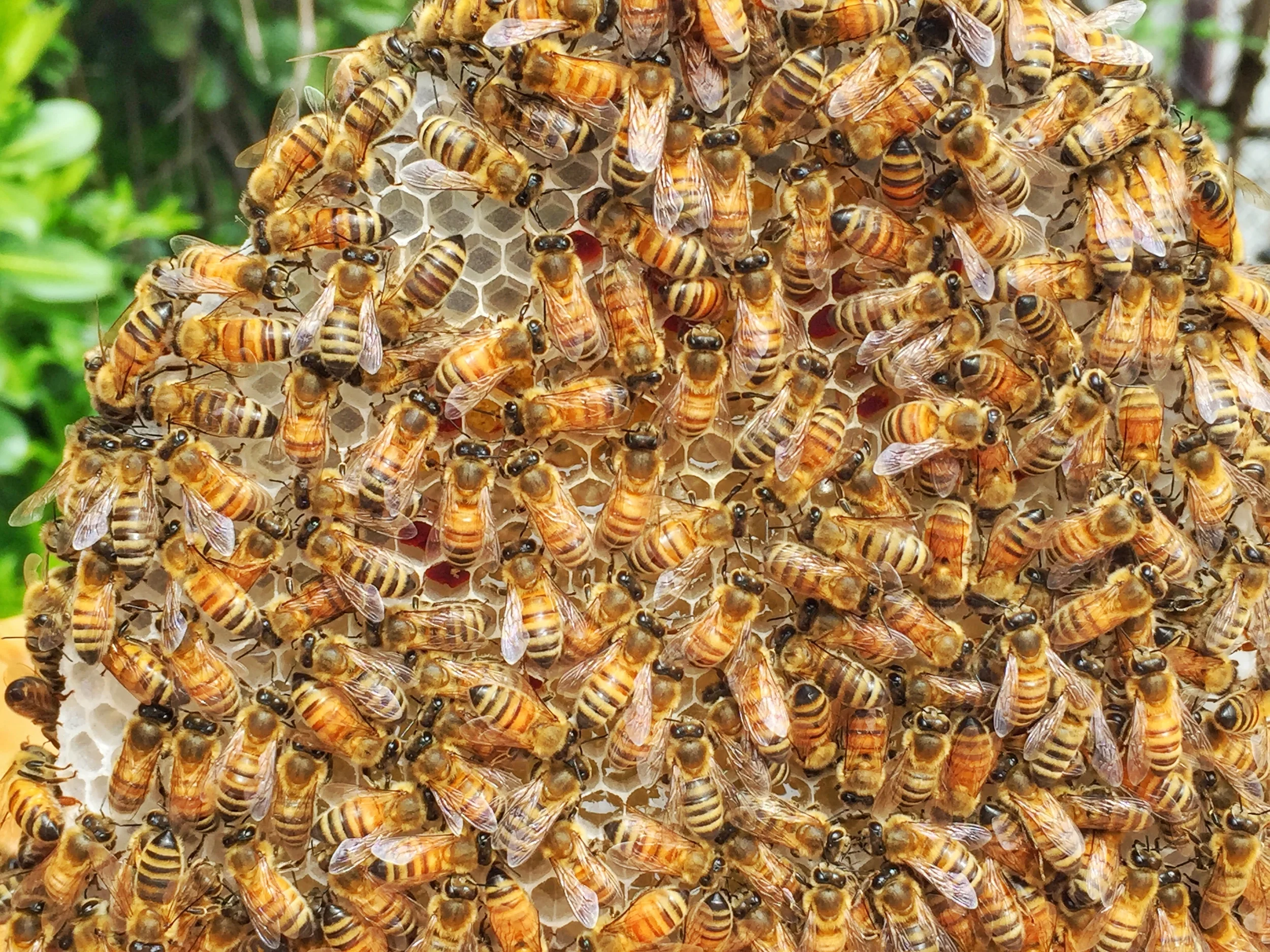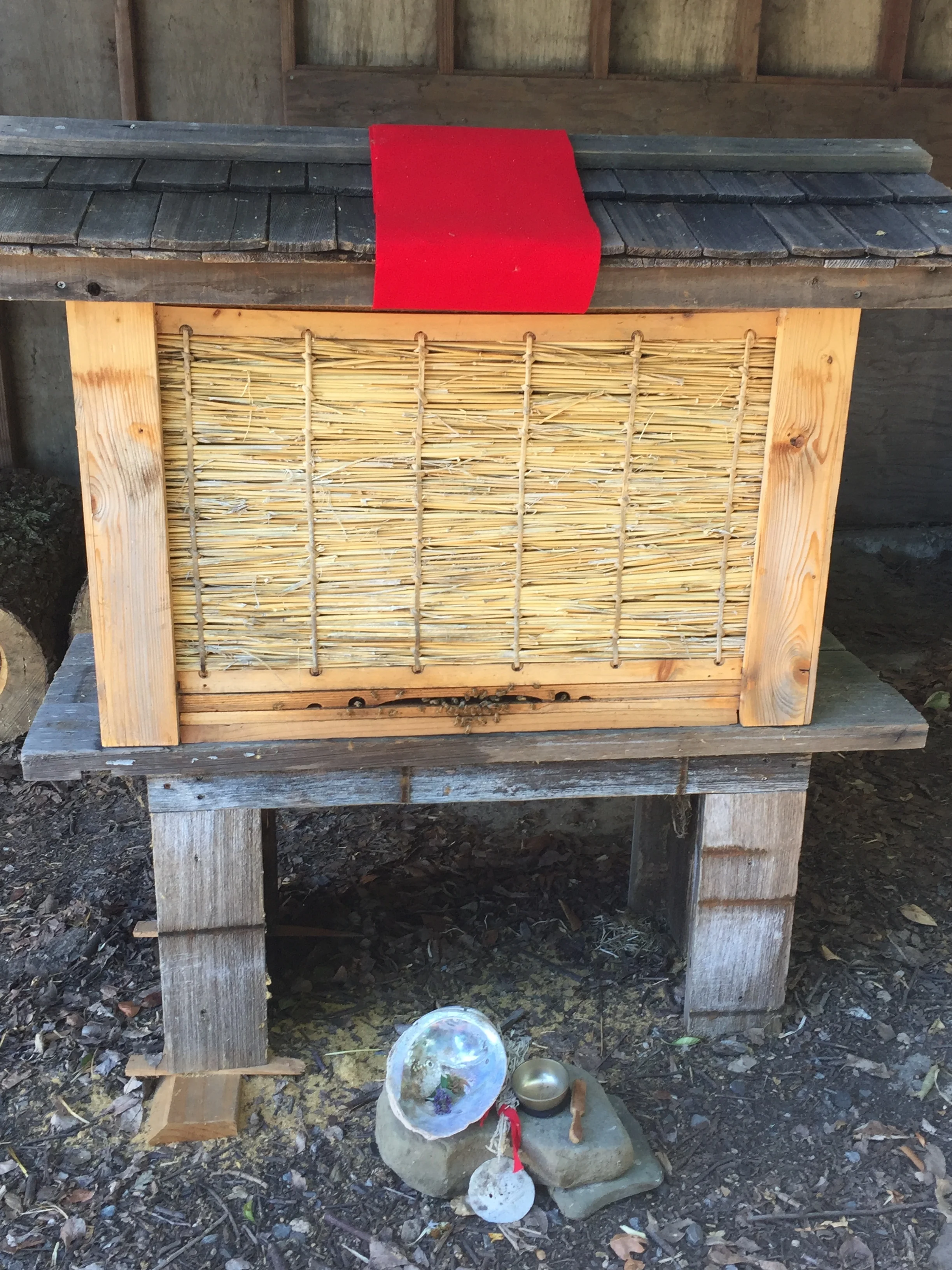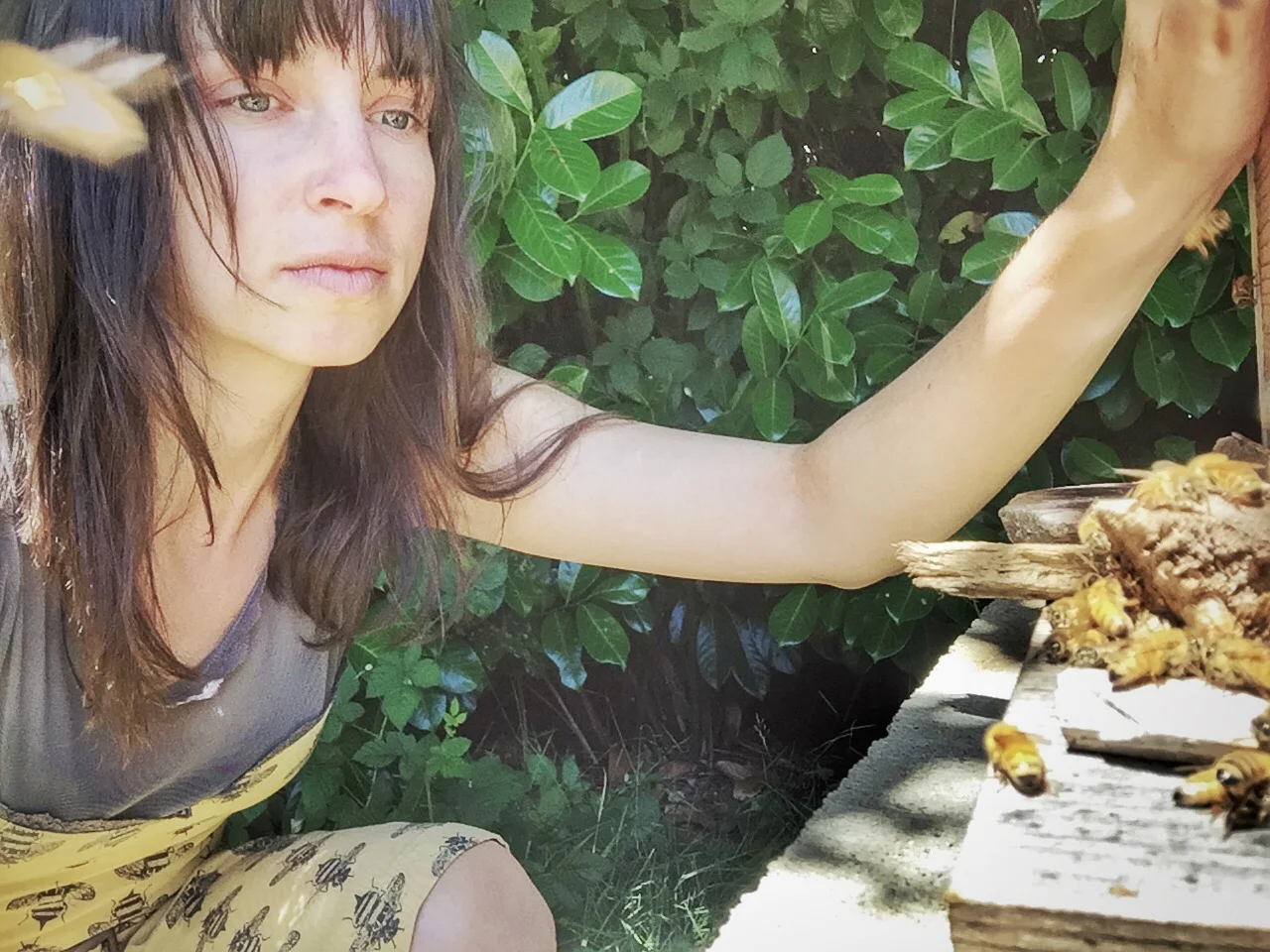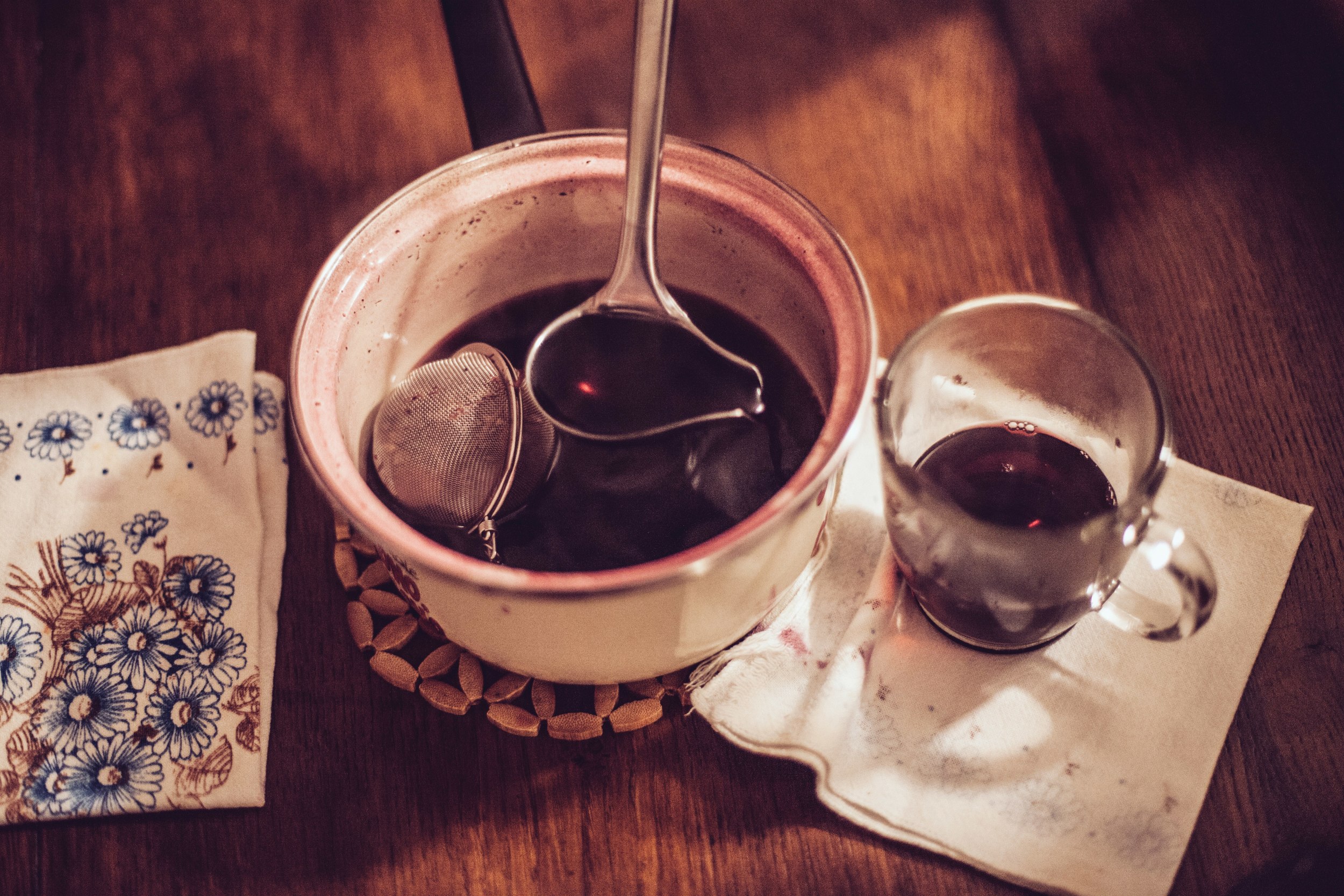The Big Bad Varroa Ally
This morning I sat in a garden teaming with the birds and the bees. Humming birds noisily darted between creeping vines of nasturtiums, red raspberries hung plump and inviting from semi-orderly thickets, honeybees swooned in the fuzzy clumps of borage, and zucchini’s performed their summer competition for Most Alarmingly Large Vegetable.
This morning I sat in a garden teaming with the birds and the bees. Humming birds noisily darted between creeping vines of nasturtiums, red raspberries hung plump and inviting from semi-orderly thickets, honeybees swooned in the fuzzy clumps of borage, and zucchini’s performed their summer competition for Most Alarmingly Large Vegetable. I was at Wildflour Bakery, a jewel of fresh baked bread and Goat Rock Roast Coffee a lazy drive down Bodega Highway. While it does have it’s downside (read: Optionitis for those who dare to choose only one loaf), it’s a not-so-secret favorite secret spot in my new home of Sebastopol, California.
I nestled myself into a garden bench with a Butternut Squash and Gouda scone and proceeded to read a most unpleasant article, but thought provoking article.
The article was titled "The Colony-Killing Mistake Backyard Beekeepers Are Making”. Let’s start there. I steer away from articles that promote fear and shame on the outset. This type of headline is mean to make you worry before you even click on the link. However, a natural beekeeper once told me that she does her damnedest to stay abreast of the conversation. She reads new research, seeks varying opinions and strives to be as educated as possible, so that when she faces a room of conventional beekeepers and states that she doesn’t use treatments and her hives are thriving, she can back the guffaws and protests of the impossible with observation and research-based knowledge.
My morning read didn't have a lot of meaty substance to it, but the thing got me thinking. It was one of the many articles I’ve seen admonishing backyard beekeepers for refusing to treat their hives with chemicals, organic or other. It speaks to the dangers of allowing mite populations to flourish, infecting other colonies for miles around and putting the species at risk. It speak to a desire that every backyard beekeeper at the least, consider chemical treatments. Miticides are, as we know, the tried and true, scientifically studied method for saving the bees.
In a video by the Rucher Ecole, treatment-free beekeeper David Heaf states “putting chemicals in the hive doesn’t just contaminate your hive products. The honeybee is susceptible to some of the miticides....It’s just trade-off against the damage to the bee and the damage to the mite….But worse still, because some of these actors are kinds of antiseptic, they seriously disrupt the microbiological environment in the hive. Bees hugely depend on the other organisms, the microorganisms in the hive, for a healthy ecology of their hive, for the health of their young and the health of themselves."
Despite such encouragement toward treatment-free beekeeping, I used to struggle with what to do. I used to ring my fingers over whether or not I should get on board and just treat my bees. I used to ask myself if not treating my bees was a form of torture. I asked this because a highly regarded local beekeeping authority from my home town of Nevada City, CA told me it WAS a form of torture. He told me the people from Marin and Sonoma who practice Natural Beekeeping were “The Taliban of Beekeepers”. Needless to say, I never went back to another one of his classes.
I began to seek out other kinds of beekeepers. I found people like Corwin Bell, Heidi Herrmann, Gunther Hauk, Michael Thiele and Jacqueline Freeman. I went looking for those “terrorist” beekeepers the man in Nevada City so aggressively disliked. I found places like The Melissa Garden in Healdsberg, CA and The Natural Beekeeping Trust in England. I started to find my kindred spirits of the bee world. Bee Guardians who have raised bees without chemicals or antibiotics. People who had, against all mainstream belief, manage to raise healthy, lasting colonies. Honey bees that even co-exists with varroa.
What are they doing different? Why do their bees thrive, despite the odds? While each natural beekeeper’s practices are different, I began to notice certain commonalities (generalizing here): they allow swarming, breed strong genetics, talk to their hives, adopt alternative hive styles, harvest much less honey (if any), plant for pollinators, rid their gardens (and neighborhoods) of pesticide use, don’t feed bees sugar, and keep their bees in one place. In short, they listen to nature. They listen to the bees.
What I find again and again, is the health of the colony or apiary is directly related to the health of its environment. Humans and bees are not so very different. Our health suffers in emotionally, physically, mentally or spiritually stressful environments. The very foundations of conventional beekeeping practices are part of what is harming our bees. I’m not a scientist, I don’t have proof. I am one of the billions of lifeforms, who’s shared birthright is this planet, who can feel the places we are out of balance and seeks to right that balance by listening to the Earth.
If that’s a little to loose for you, try this: pesticides actually do kill (they are design to) and if you want healthy bees start by eradicating pesticide use from your seeds, your garden, your neighborhood, your country, your planet.
Returning to my morning garden moment, as if on point, in my caffeine-induced, bee-advocate reverie, I heard a British woman exclaim, “There are just so many bees here! I love the bees! Isn’t there a kind of pesticide that’s hurting them?” Without thinking, I shouted through a patch of sunflowers, “Neonics! I mean, yes, there is. Sorry! Didn’t meant to interrupt. I’m a beekeeper. They’re called neonicotinoids.” She looked at me blankly, after which, I thoroughly retreated back into my unassuming bench, and read on.
There was one more particularly crunch paragraph in the article that caught my eye. "Bees face other challenges beyond mites, including poor nutrition, disease and pesticides. Even veteran beekeepers say it takes more effort to keep their bees alive these days.”
I had a little chuckle to myself. Yup, other challenges. It comes back to our very Western way of thinking: treat the symptom not the cause. Varroa is a symptom of a much larger dis-ease in our pollinator communities. What if, instead of looking at Varroa as a monster, we looked to Varroa as an ally? The dark shadow-self that comes forward when we need to look at something we have been unwilling to see? An aspect of the entire ecosystem that has it’s place in the larger story. Some piece of our own wholeness that has gone out of balance and “appears” as a demon (ok ok, a mite), but is really just a way our inherent wisdom is communicating with us. I know I’m making metaphors between the human psyche and beekeeping. Just be cool with it. I’m a beginner. I know a whole lot about bees and will probably never stop being a beginner. This is the way of learning the natural world.
The truth is, when it comes to beekeeping, colonies that come from treated parent colonies are going to have a really hard time making it through without treatments. These are bees that come from packages and nucs sourced from large-scale conventional beekeeping operations after the hives have traveled to the California almond pollination event in early spring. They are often not coming from a healthy environment, have been fed sugar, and are of weaker genetics than naturally raised or feral hives. As a beekeeper helping other backyard beekeepers get started, this question of source is ever-pressing. How do I help bees coming from treated colonies make the transition to treatment-free beekeeping? I wish we could all set up apiaries and naturally breed our own strong colonies, but alas, there are still too few beekeepers trying things the old old old school way. I will keep asking this question, because I believe in backyard beekeeping, and I believe it can do much more good than harm.
In the mean time, grow your gardens without pesticides, plant for pollinators, educated yourself, and sit next to your hive. Grab a cup of tea and sit there a long time. Sit there until the Mad Woman of the House goes quiet inside. Sit there until the life-hum whispers a sweet honeyed language into your heart. Sit there until you are bored. Sit there until you realize, without noticing, a great calm has descended upon you. Sit and talk to your bees, for I promise, with absolutely zero science to back me up, they will most certainly talk to you.
A Walk Through an Herbalist's Garden
Melissa bends low and plucks a small herb growing out of the cobble stones in front of her house. She holds it up to the light and shows me the tiny perforated holes in the leaves.
“That’s how you can tell it’s the medicinal St. John’s Wort.”
Note: Melissa is a fictitious name to respect anonymity of person and place. The name 'Melissa' translates to 'honey bee'. No photos were taken on location.
Melissa bends low and plucks a small herb growing out of the cobble stones in front of her house. She holds it up to the light and shows me the tiny perforated holes in the leaves.
“That’s how you can tell it’s the medicinal St. John’s Wort.”
She presses the sample in between a card about the medicinal properties of St. John’s Wort and offers it to me.
Melissa is a licensed herbalist living in a serene tucked-away valley in Southwest England. Her practice and gardens sit on one side of a happily meandering river, and on the other, there are two hives of bees. We stand in the early morning sunlight, watching the bees from the opposite side of the river. I don’t have to ask to know we wont be going any closer. These bees are to be left undisturbed. They are part of the land, as much as the hazels and the stones. Melissa regards them with an appraised respect. She never goes into the hives, and clearly does not keep bees for the purpose of harvesting and selling honey. The bees are part of the land and the land is rich with the plants that heal. They are wild hives.
Melissa takes us past the historical stone building on the property and into her gardens. She is wearing sturdy trousers, wellies and a thick wool sweater with a leather tool belt strapped around her waist where she can store her clippers and garden shears. She is every inch the embodiment of wise, practical and earth-centered. When we contacted her to find out if we could meet, she expressed that to visit is really about visiting the land, and since she lives on the land, she is more an aspect of the land itself.
After the bees, Melissa takes us by her wild garden. Once again, she doesn’t explain much, other than it is wild. I am reminded of a saying I once heard. “Always leave a part of your garden wild for the fairies." In this case, I think the fairies are the spirit of the land itself, the devas of the trees and river, made manifest in freely growing flowers and medicinals. It is a sage practice in that it honors both yourself as steward of place, and the land in its wild, infinite wisdom.
We pass through a bower and along the circuitous “rows” of her cultivated herb garden. I see carpeted thyme, raspberry, lavender and hawthorne. There are apple trees endemic to the valley, so old I feel like bowing to them. She teaches us the best way to pick apples and we harvest a pile of “cookers” and a pile of “eaters” to take home.
“You know an apple is ready to pick if your twist it, ever-so-gently, and it comes away. Never pull it.”
Inside her workshop, the light is dim, creating an immediately hushed, cosy environment. Here we find the transformation of her labors with the land into herbal medicines. On the table illuminated by a shaft of filtered light, is a large round basket of drying nettles. Nearby sits another basket fill with some kind of root, and above, herbs drying in bunches. Along the walls are bags and bags of neatly arrange herbs, and in the corner, there is a hearth with a kettle. Only in my dreams have I ever seen such a place. It is at once ancient and modern. I feel awed by the complexity of knowledge Melissa clearly possesses, while at the same time, comforted by the simplicity of being with the plants.
When speaking to her, I feel as though I am speaking to the voice of the valley. There is a deep listening in her presence that found often among those who live close to the earth. A listening that is more difficult to cultivate in our urban, technology-driven lives, but still possible. To listen deeply is to see true.
As someone who is currently not rooted to any one place, and is ultimately seeking a home (even if it’s more than one home in more than one country!), I find myself thinking about what it means to be truly rooted to a piece of land. I am lucky to travel the world and fall in love with landscape, people, cities and communities everywhere. I root myself in the act of being as present as I possibly can wherever I am. I am by no means a master as such things; that’s why it’s called a practice. In doing so, there are certain landscapes, just like certain people, that our bodies resonate to. Place where we receive an internal yes that has very little to do with the mind, and everything to do with the land. Earth reaching up as the body reaches down. How must it feel to know one piece of land so intimately that each flower, each root, each passing of the seasons becomes an extension of the self? The self becomes a reflection of the land: moulded, tempered and transformed.
I leave you with this quote by John Seymour, author and pioneer in self-sufficiency and environmental awareness:
“The ‘owner’ of a piece of land has an enormous responsibility, whether the piece is large or small. The very word ‘owner’ is a misnomer when applied to land. The robin that hops about your garden, and the worms that he hunts, are, in their own terms, just as much ‘owners’ of the land they occupy as you are. ‘Trustee’ would be a better word. Anyone who comes into possession, in human terms, of a piece of land, should look upon himself or herself as the trustee of that piece of land - the ‘husbandman’ - responsible for increasing the sum of things living on that land, holding the land just as much for the benefit of the robin, the wren and the earthworm, even the bacteria in the soil, as for himself.”
